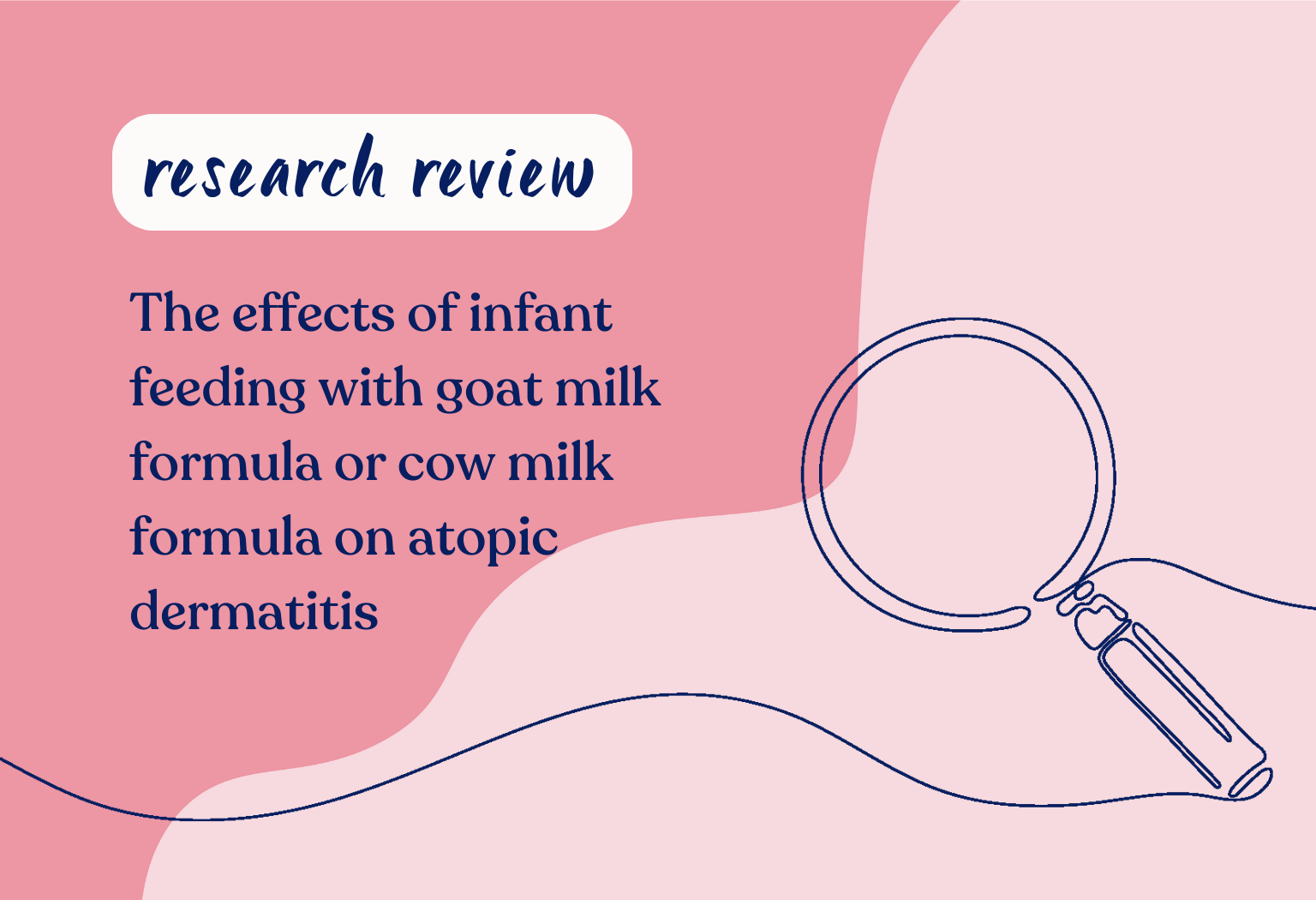- Bieber T. Mechanisms of disease: atopic dermatitis. N Engl J Med 2008;358:1483–94. doi:10.1056/NEJMra074081
- Weidinger S, Beck LA, Bieber T, et al. Atopic dermatitis. Nat Rev Dis Primers 2018;4:1. doi:10.1038/s41572-018-0001-z
- Sanz Ceballos L, Sanz Sampelayo MR, Gil Extremera F, et al. Evaluation of the allergenicity of goat milk, cow milk, and their lactosera in a guinea pig model. Journal of Dairy Science 2009;92:837–46. doi:10.3168/jds.2008-1125
This article is adapted from effects of infant feeding with goat milk formula or cow milk formula on atopic dermatitis: protocol of the randomised controlled Goat Infant Formula Feeding and Eczema (GIraFFE) trial
Atopic dermatitis, also known as eczema, is a chronic inflammatory skin condition which is common in children. Those who suffer can have an intense itch with recurring dry, red, and cracked skin, commonly on the hands, insides of elbows and backs of knees. Symptoms can come and go over time. It affects 15-30% of children in industrialised countries1 and commonly it appears in the first year of life. The strongest risk factor for eczema is having a family history of the disease, and there is thought to be a genetic influence2. Other factors which influence eczema risk are climate, household pets, diet, obesity, pollution, infections in childhood, among many others. There are no effective strategies for the prevention of eczema development in infants. It is thought that prolonged breast feeding may increase risk and that infants who have a strong family history of the disease should not be breastfed for over 4 months, but this remains controversial. Some prebiotics and probiotics may have preventative effects, but this is yet to be confirmed.
There has been recent interest in the use of goat milk based formula in the reduction of eczema risk. There have been indications from animal studies that goat milk is less allergenic than cow milk3. Previous trials comparing goat milk based infant formula with cow milk based formula have found comparable growth rates and tolerability. One such study found a lower incidence of skin irritation among infants fed goat milk based formula compared to cow milk based formula (14% vs 23%). However, the study included a small number of infants and therefore this result was not statistically significant. The study summarised here was thus conducted to further investigate the potential of goat milk to reduce the incidence of eczema. This study also aimed to identify risk factors for eczema development.
This study included healthy term infants of parents who had decided to start formula feeding, but were encouraged to continue partial breastfeeding. Infants were enrolled between birth and 4 months of age and the study continued up to 12 months of age. The goat milk formula used was already on the market as Capricare™ and the control cow milk based formula was based on skim milk, whey protein powders and vegetable oils. Both formulas had the same composition of carbohydrates, fat and protein and complied with European Commission Regulations. Intake of the study formula was measured and infants were classed as not complying with the feeding protocol if they had a break in study formula consumption longer than 3 consecutive days and/or introduction of solid foods before the age of 4 months.
The study aimed to enrol 1148 infants per group, therefore a total of 2296 infants, across 10 centres in Spain and Poland. Study measurements were taken upon enrollment, and at 4, 6, 12, 24 and 60 months of age. Measurements taken included eczema diagnosis using the UK Working Party Diagnostic Criteria and severity of eczema using the SCORAD and POEM questionnaires, detailed records of infant feeding and food preferences, diagnosis of food allergies, and occurrence of any adverse health events. Blood samples were taken to test for immune system markers and stool samples were taken for microbiome measurements.
References

